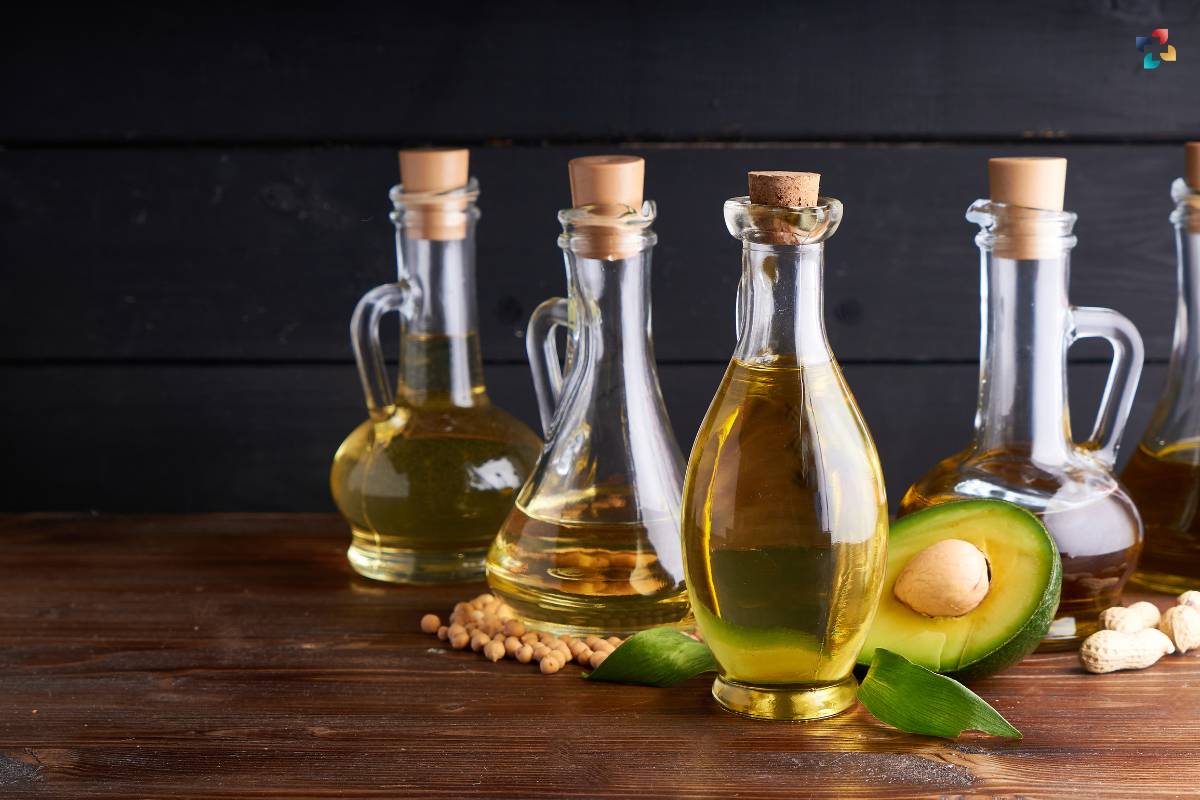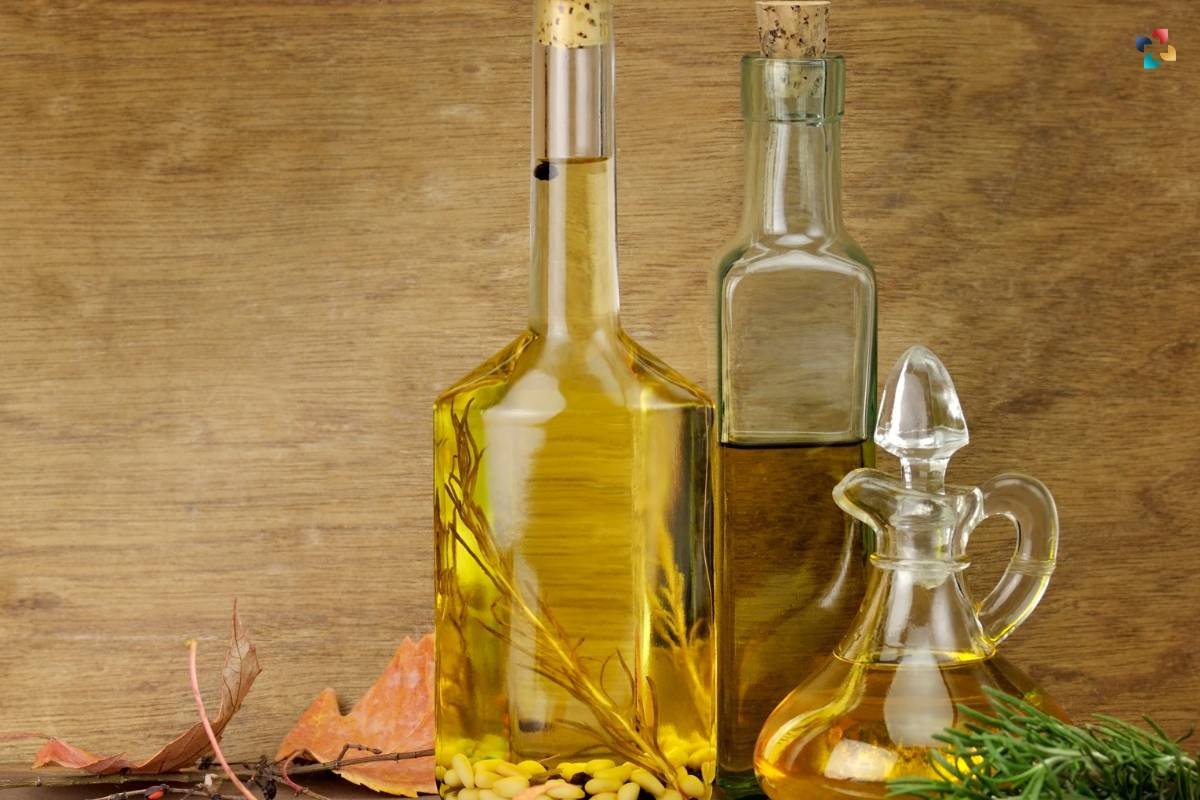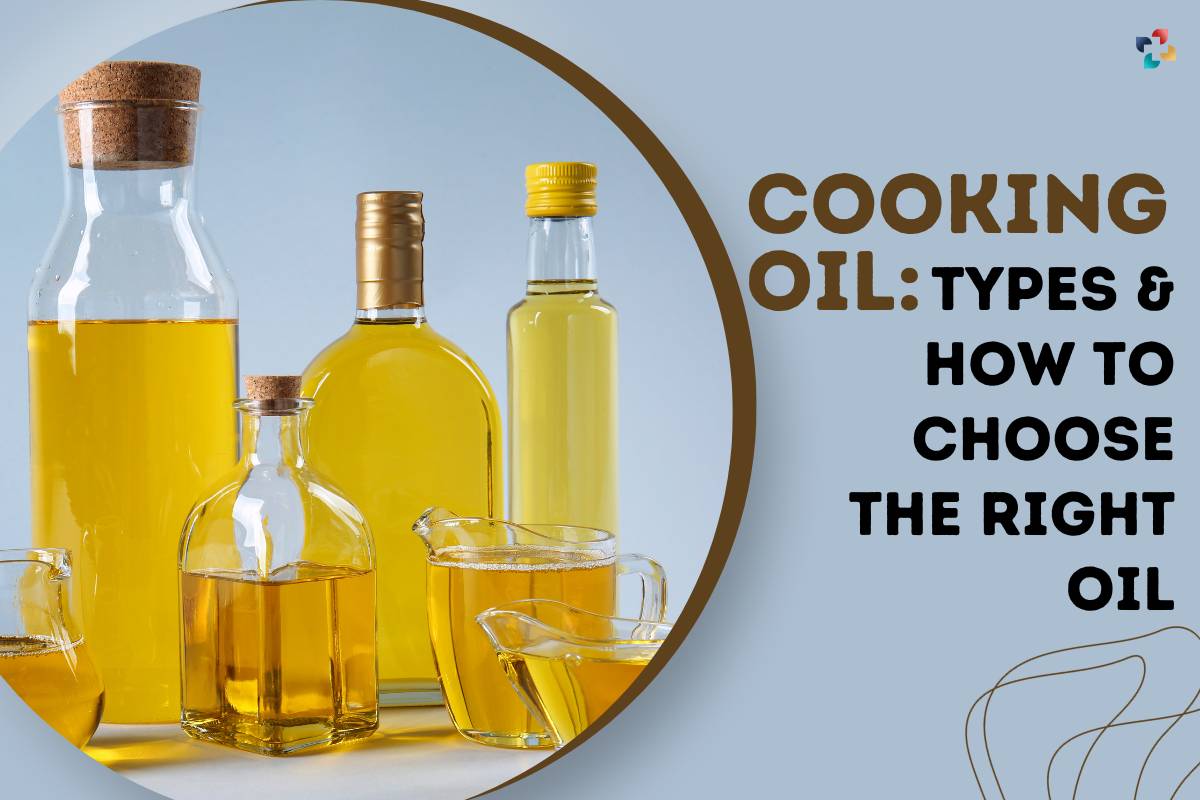Cooking oil is a basic component found in almost every kitchen and the basis for many culinary inventions. It is essential for baking, frying, marinating, and sautéing. However, selecting the best cooking oil can be difficult given the variety of options available. We’ll examine the many kinds of cooking oils in this post and offer advice on how to choose the best one for your cooking requirements.
Understanding the Importance of Cooking Oil
Before diving into the diverse world of cooking oils, it’s essential to recognize the significance of this ingredient in the kitchen:
- Heat Transfer: Cooking oil serves as a medium for transferring heat from the pan to the food. Different oils have varying smoke points, which determine their suitability for different cooking methods.
- Flavor Enhancement: Oils can enhance the flavor of dishes by carrying and infusing the flavors of herbs, spices, and other ingredients.
- Texture and Moisture: Oils can contribute to the texture and moisture content of cooked foods, making them crispy, tender, or succulent, depending on the oil used.
- Nutritional Value: Cooking oils can provide essential nutrients and healthy fats, making them a valuable part of a balanced diet.
- Preservation: Oils can help preserve food by creating a barrier that prevents moisture loss and oxidation, extending the shelf life of certain dishes.
Here are 12 Common Types of Cooking Oils:

1. Vegetable Oil
Vegetable oil is a versatile and neutral-tasting option that is suitable for a wide range of cooking methods, including frying, sautéing, and baking. It is often a blend of various plant-based oils like soybean, canola, and corn oil.
2. Olive Oil
Olive oil is a staple in Mediterranean cuisine and comes in various grades, including extra virgin, virgin, and refined. Extra virgin olive oil is known for its rich, fruity flavor and is best used for salad dressings and low to medium-heat cooking. Refined olive oil has a higher smoke point and is suitable for higher-heat cooking.
3. Coconut Oil
Coconut oil is a popular choice for both cooking and baking. It has a distinct tropical flavor and is often used in dishes like curries and desserts. It is solid at room temperature but turns into a liquid when heated.
4. Canola Oil
Canola oil is known for its mild flavor and high smoke point, making it suitable for various cooking methods. It is a heart-healthy option due to its low saturated fat content.
5. Peanut Oil
Peanut oil is a favorite for deep frying due to its high smoke point and neutral flavor. It imparts a subtle nutty taste to fried foods.
6. Sesame Oil
Sesame oil comes in two varieties: light and dark. Light sesame oil has a milder flavor and is suitable for stir-frying and sautéing. Dark sesame oil, on the other hand, is used more sparingly to add flavor to dishes.
7. Avocado Oil
Avocado oil is a relatively new entrant to the cooking oil scene and is known for its mild flavor and high smoke point. It is rich in monounsaturated fats and is great for sautéing, roasting, and grilling.
8. Grapeseed Oil
Grapeseed oil is a neutral-tasting oil with a high smoke point, making it suitable for frying and searing. It is often used in salad dressings as well.
9. Sunflower Oil
Sunflower oil is another neutral-tasting oil with a high smoke point. It is a versatile choice for various cooking methods, including frying and baking.
10. Corn Oil
Corn oil has a mild flavor and is often used in frying and baking. It is high in polyunsaturated fats and is suitable for high-heat cooking.
11. Safflower Oil
Safflower oil has a neutral flavor and high smoke point, making it versatile for cooking methods like frying, sautéing, and baking.
12. Ghee
Ghee is a type of clarified butter often used in Indian cuisine. It has a rich, nutty flavor and a high smoke point, making it ideal for cooking and frying.
How to Choose the Right Cooking Oil

Selecting the right cooking oil depends on several factors, including the type of dish you’re preparing, the cooking method, and your dietary preferences. Here are some key considerations to keep in mind when choosing a cooking oil:
1. Smoke Point
The smoke point of an oil is the temperature at which it starts to break down and produce smoke. Oils with high smoke points, like peanut oil and grapeseed oil, are suitable for high-heat cooking methods such as frying, while oils with lower smoke points, like extra virgin olive oil, are best for low to medium-heat cooking.
2. Flavor Profile
Consider the flavor of the oil and how it complements your dish. For instance, if you’re making a stir-fry, sesame oil can add an authentic Asian taste, while the mild flavor of canola oil won’t overpower your ingredients.
3. Nutritional Value
Different oils offer varying nutritional benefits. Some, like olive oil, are rich in heart-healthy monounsaturated fats, while others, like coconut oil, are high in saturated fats. Consider your dietary needs and preferences when selecting an oil.
4. Culinary Use
Think about the cooking method you’ll use. For frying, oils with high smoke points are essential. For salad dressings or drizzling over cooked dishes, extra virgin olive oil, avocado oil, or nut oils like walnut or hazelnut oil may be preferred.
5. Allergies and Dietary Restrictions
If you or your family members have allergies or dietary restrictions, be cautious when selecting oils. For example, those with nut allergies should avoid nut oils, and individuals following a vegan diet may opt for plant-based oils.
6. Cost
The cost of different oils can vary significantly. While premium oils like extra virgin olive oil or avocado oil may be pricier, more affordable options like vegetable oil or canola oil are readily available.
7. Shelf Life
Some oils have longer shelf lives than others. Consider the frequency of your cooking and whether the oil is likely to be used up within a reasonable time frame.
8. Local Availability
Availability can be a deciding factor. Depending on your location, certain oils may be more readily accessible than others.
9. Cooking Oil Storage and Handling
Proper storage and handling of cooking oils are crucial to maintain their quality and flavor. Here are some tips for ensuring your cooking oils remain fresh:
10. Store in a Cool, Dark Place

Exposure to light and heat can cause oils to go rancid more quickly. Keep your oils in a cool, dark cupboard or pantry.
11. Seal Tightly
Ensure that the cap or lid of the oil container is tightly sealed to prevent air from entering, which can lead to oxidation.
12. Avoid Reusing Frying Oil
While some people reuse frying oil to save money, it’s not recommended as it can lead to the formation of harmful compounds. Dispose of used frying oil responsibly.
13. Check for Rancidity
Oils can become rancid over time. To check for rancidity, smell the oil. If it has an off or unpleasant odor, it may be time to discard it.
14. Use a Clean, Dry Spoon
When pouring oil, use a clean, dry spoon to avoid introducing moisture into the container, which can lead to spoilage.
15. Consider Smaller Containers
If you don’t use a particular oil frequently, consider transferring it to a smaller container to minimize exposure to air.
16. Label and Date
If you decant oils into different containers, label them with the type of oil and the date of decanting to help keep track of freshness.
Conclusion
With so many flavors and qualities to improve and change your food, cooking oil is a necessary element in the culinary arts. When choosing frying oil, one must take into account many aspects such as flavor, nutritional content, smoke point, and culinary application. Having access to a range of oils allows you to experiment and discover the ideal complement for any meal you cook. Cooking oils offer a delicious taste and texture that can enhance your culinary creations. To enhance your cooking, learn about the qualities of various oils and adhere to safe storage and handling practices.
Also Read: The Health Benefits of Cooking at Home











